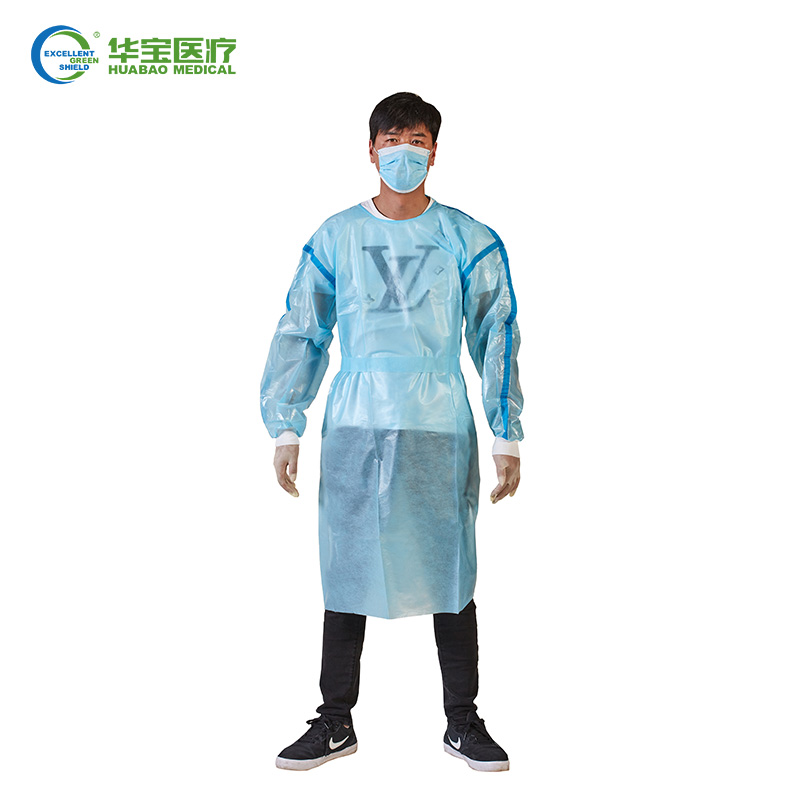The Difference Between Isolation and Surgical Gowns
In medical and healthcare settings, the proper use of personal protective equipment (PPE) is essential to ensure the safety of both healthcare professionals and patients. Two crucial components of PPE are isolation gowns and surgical gowns. While they may seem similar, these gowns serve distinct purposes and offer varying levels of protection. This article aims to shed light on the key differences between isolation and surgical gowns.
Isolation Gowns: A Barrier of Protection
Isolation gowns are a type of PPE designed to provide a barrier between the wearer and potentially infectious substances, such as blood, bodily fluids, and other contaminants. They are typically used in situations where there is a relatively low risk of exposure to infectious agents, such as during patient care activities that do not involve surgical procedures.
Material and Design: Isolation gowns are commonly made from lightweight and breathable materials like polypropylene or spunbond-meltblown-spunbond (SMS) fabric. They are designed with long sleeves and a waist tie closure to ensure adequate coverage of the front and back of the wearer. Isolation gowns are often available in various levels of protection, ranging from minimal fluid resistance to higher levels of protection.
Use Cases: Isolation gowns are suitable for tasks such as routine patient care, administering medication, drawing blood, and interacting with patients in isolation rooms. They provide a reliable barrier against splashes and sprays, making them an essential PPE in preventing cross-contamination.

Surgical Gowns: Precision in the Operating Room
Disposable Surgical Gowns, on the other hand, are specifically designed to be worn during surgical procedures to protect both the surgical team and the patient. They offer a higher level of protection compared to isolation gowns due to the increased risk of exposure to bloodborne pathogens and other bodily fluids during surgeries.
Material and Design: Surgical gowns are made from more durable and tightly woven materials, such as polyester-blended fabrics or polypropylene. They feature a closed-back design with tie closures at the neck and back, ensuring a secure fit and complete coverage of the wearer's front and back. Surgical gowns are available in different levels of protection, often denoted by the Association for the Advancement of Medical Instrumentation (AAMI) standards.
Use Cases: Surgical gowns are an integral part of the sterile field in the operating room. They protect surgeons, nurses, and other operating room personnel from potential contamination while maintaining a sterile environment during surgical procedures. The higher level of protection provided by surgical gowns is essential to prevent the transmission of infections and maintain patient safety.
Key Differences Summarized
Protection Level: Isolation gowns offer protection against minimal to moderate fluid exposure, while surgical gowns provide a higher level of protection against potential contamination during surgical procedures.
Material and Design: Isolation gowns are typically made from lightweight materials and feature a waist tie closure, whereas surgical gowns for hospital are constructed from more durable materials with a closed-back design and tie closures at the neck and back.
Use Cases: Isolation gowns are suitable for routine patient care and activities with a lower risk of exposure, while surgical gowns are essential for maintaining a sterile field in the operating room.
Conclusion
Understanding the differences between isolation and surgical gowns is crucial for healthcare professionals to select the appropriate PPE for different scenarios. Both types of medicle gowns play vital roles in infection prevention and ensuring the safety of healthcare workers and patients. Proper usage of these gowns contributes to maintaining a hygienic and secure environment in medical settings, ultimately leading to better patient outcomes and overall healthcare quality.


Comments
0